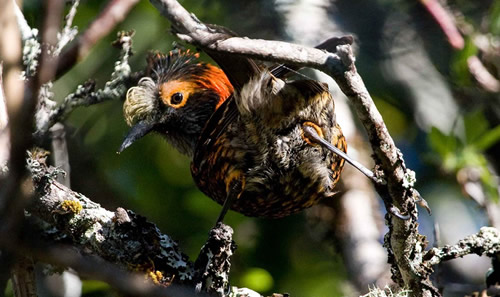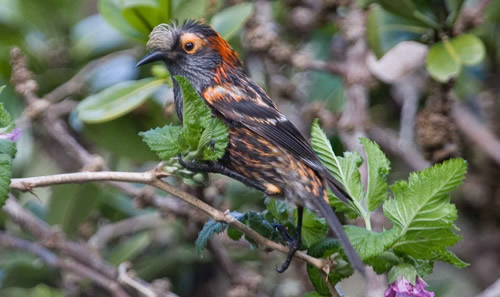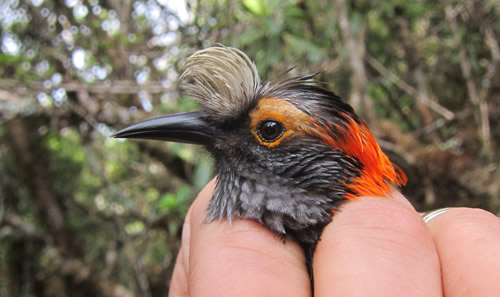'Akohekohe
Crested Honeycreeper; Palmeria dolei
The rare (critically endangered) and ornate ‘Ākohekohe, or Crested Honeycreeper, is one of the largest honeycreepers, measuring over 7 inches, and also one of the most distinctive. ‘Ākohekohe are uniformly dark with silver flecks on the face and upper breast, white-tipped tails and wingtips, and have bright orange napes and eye patches. The white crest on their foreheads is the source of their English name. ‘Ākohekohe fiercely defend nectar sources and are often seen chasing other birds out of ‘ōhi‘a trees. With their exceptionally long legs, they typically run across the treetops between blossoms and are seen doing very acrobatic twists and splits to reach flowers. ‘Ākohekohe exist in pristine native forests above 5,700 ft in elevation making them the most range-restricted species on Maui.



